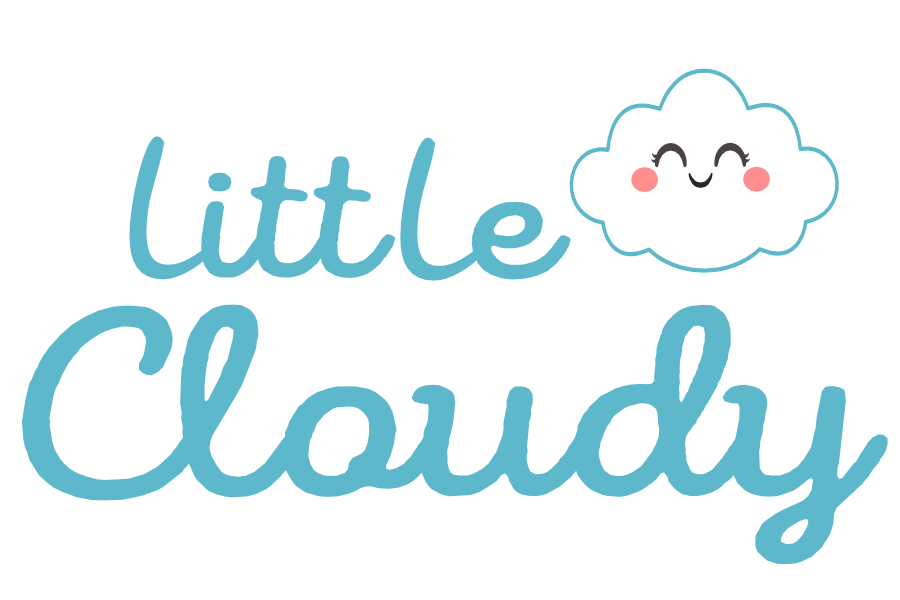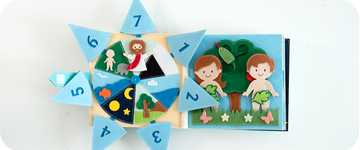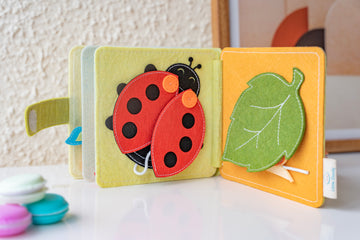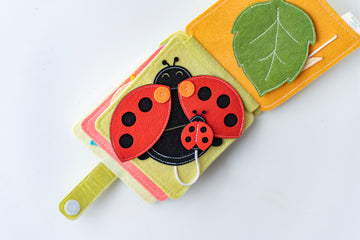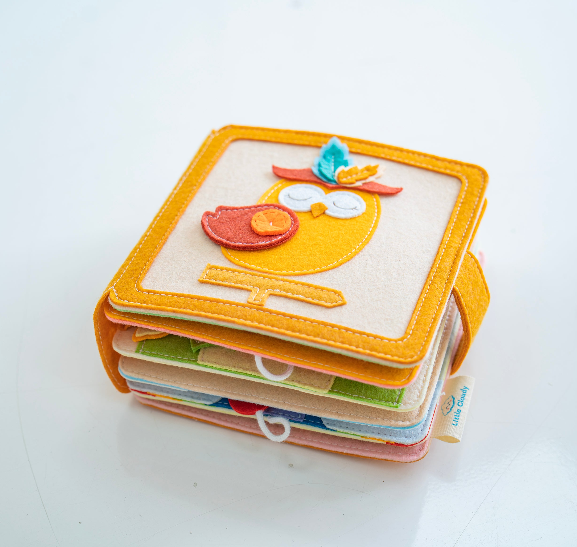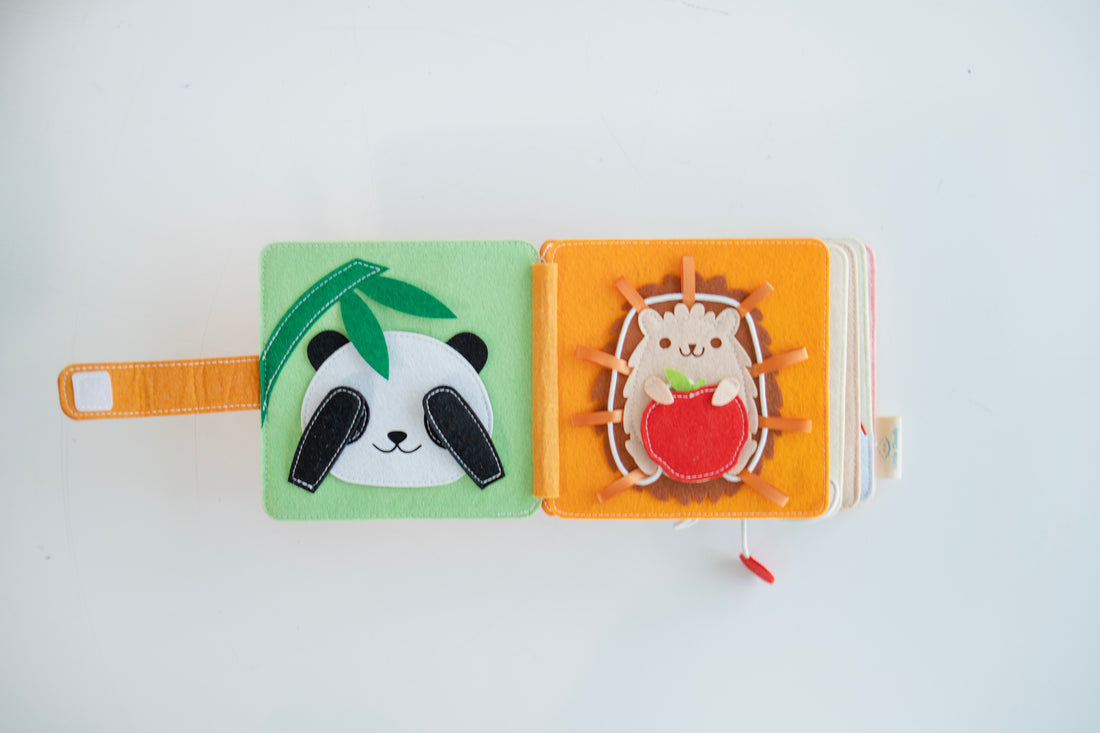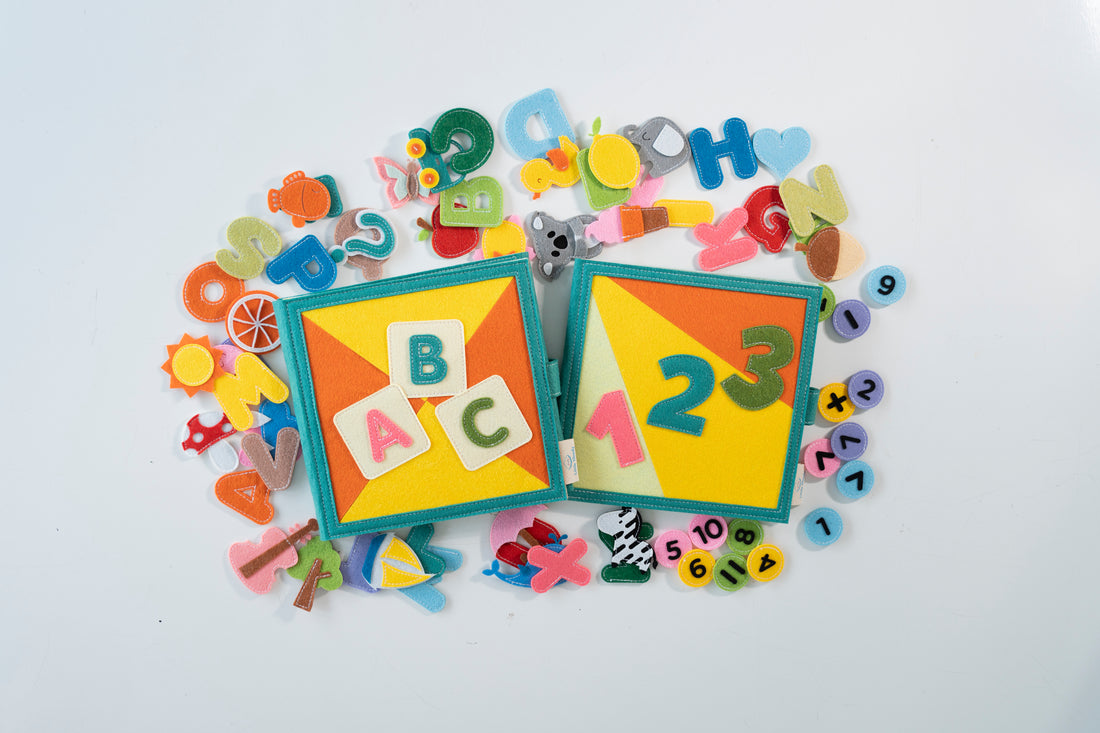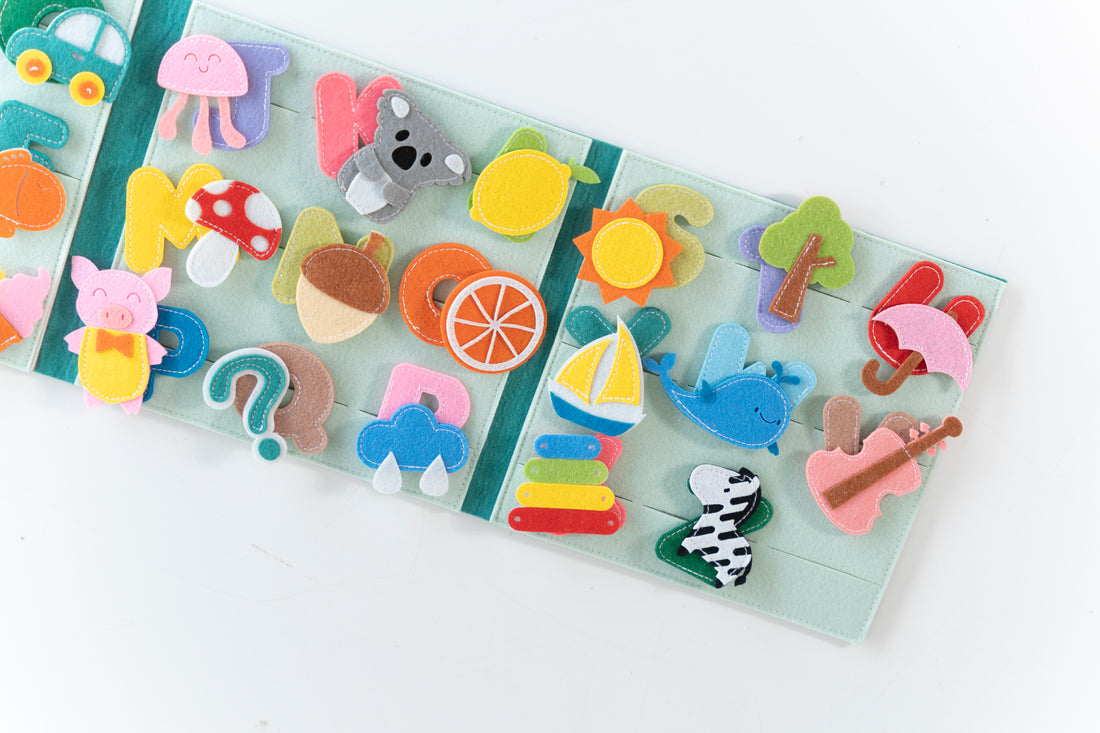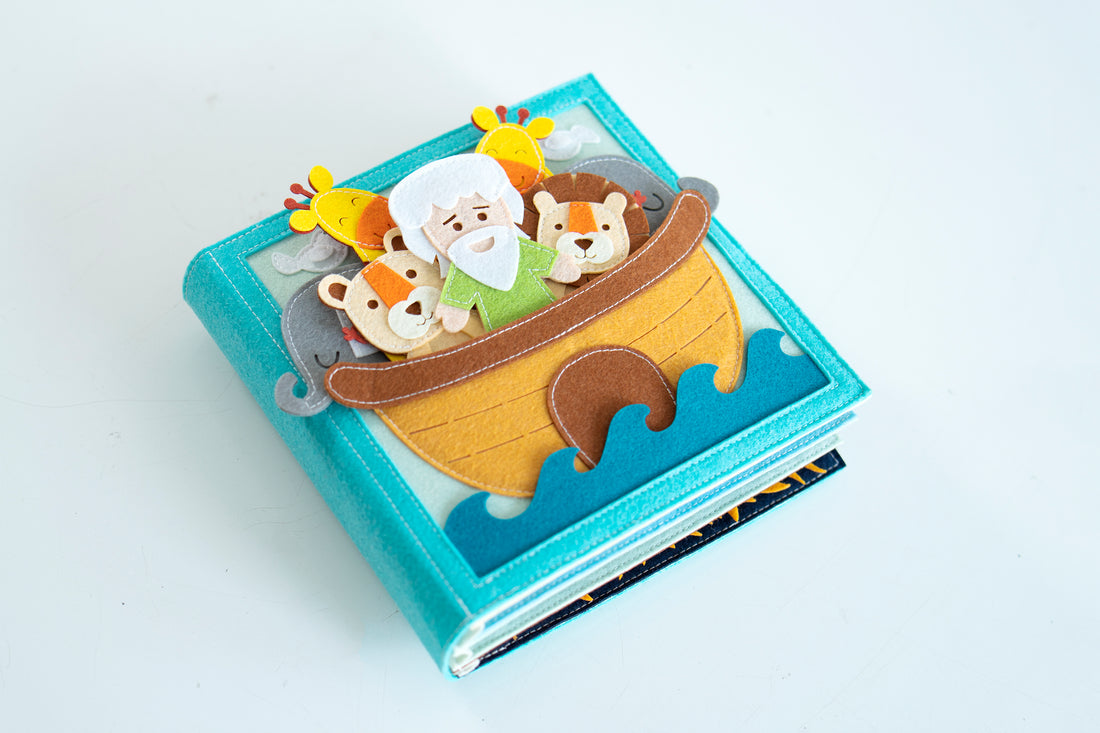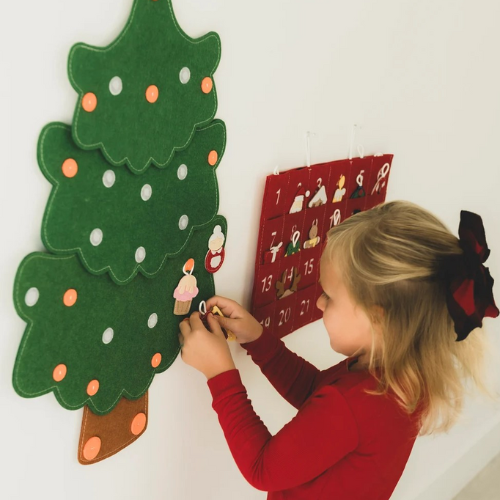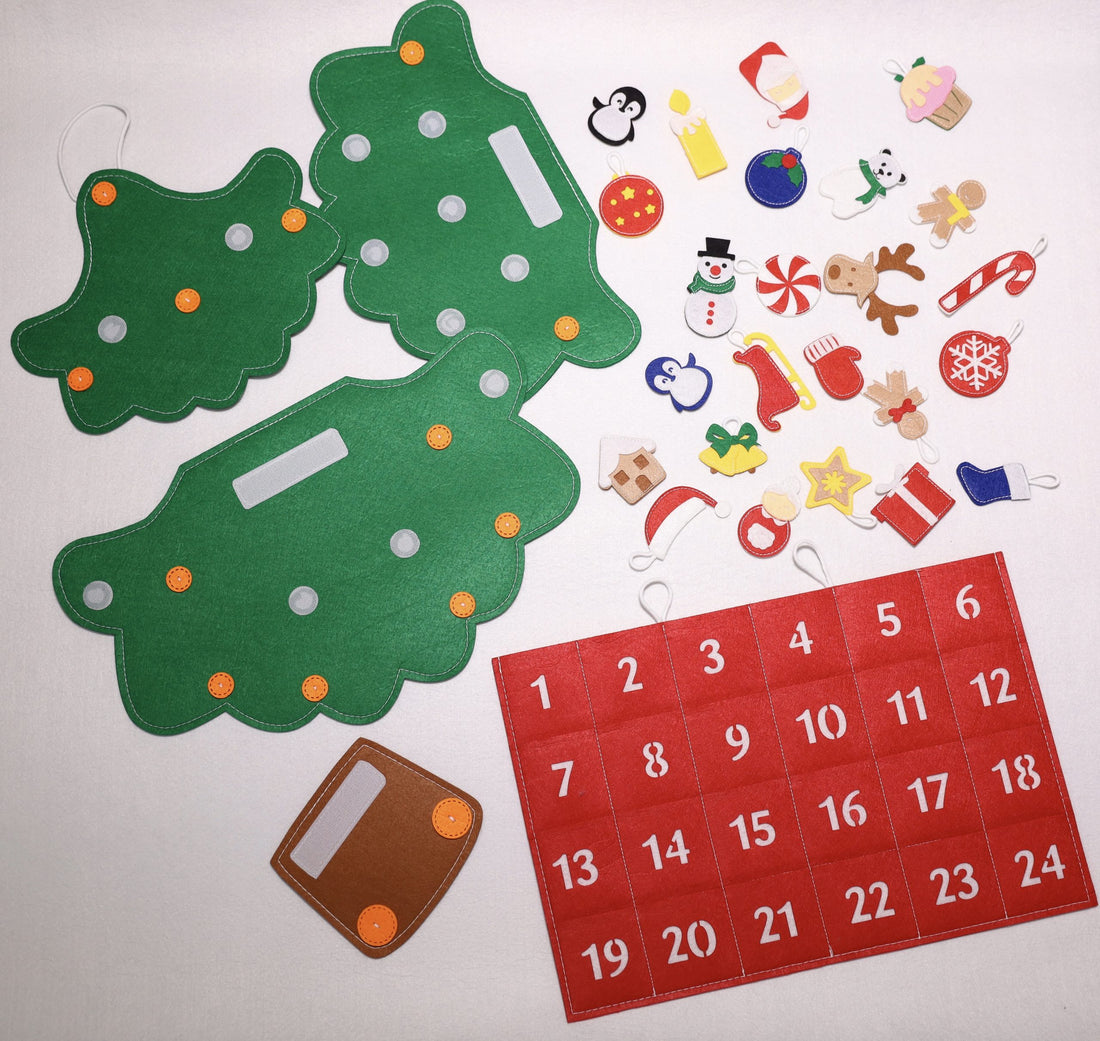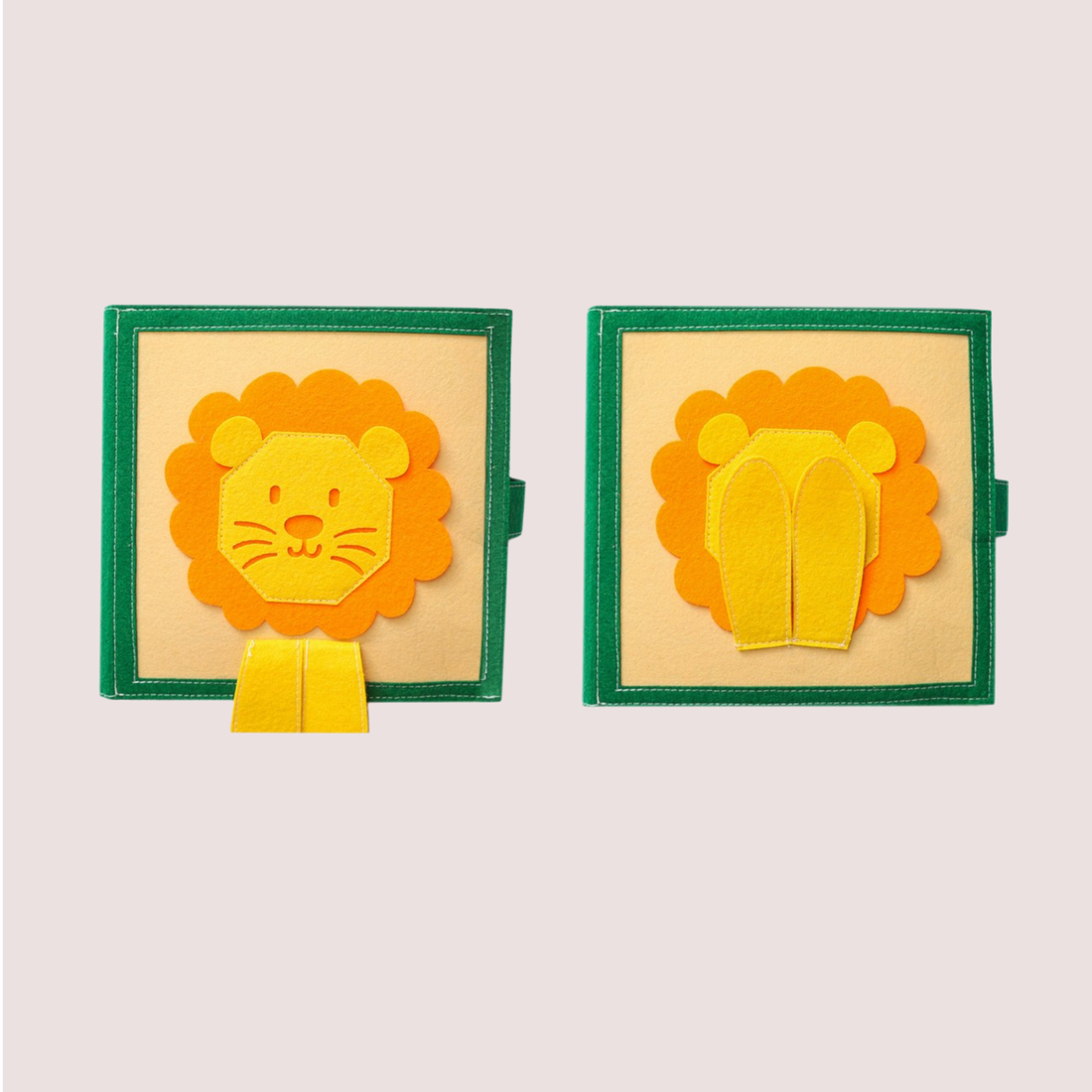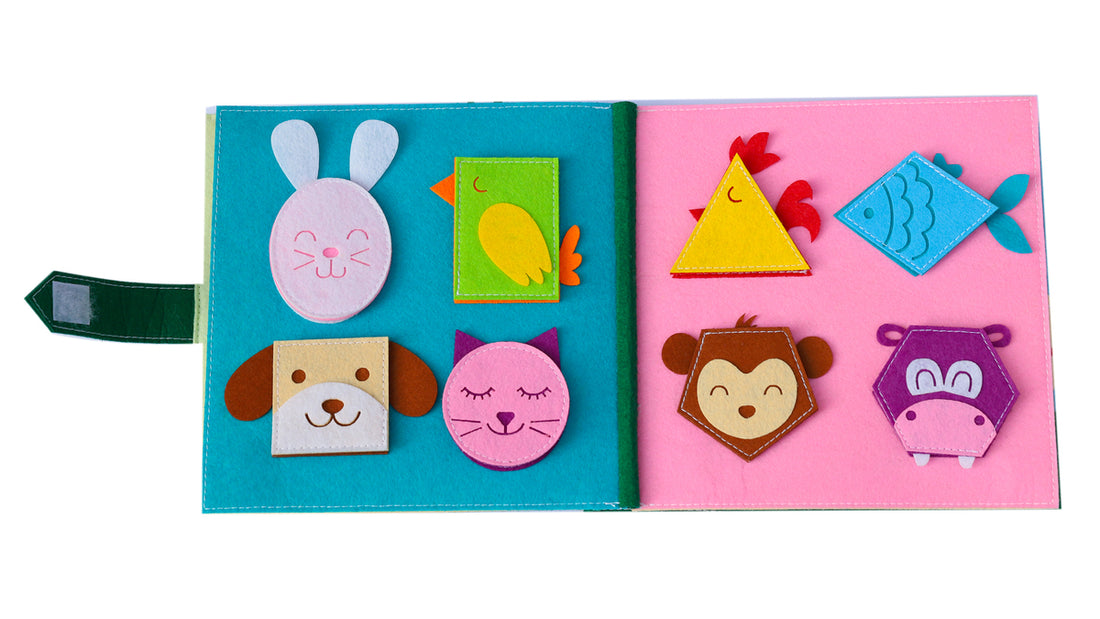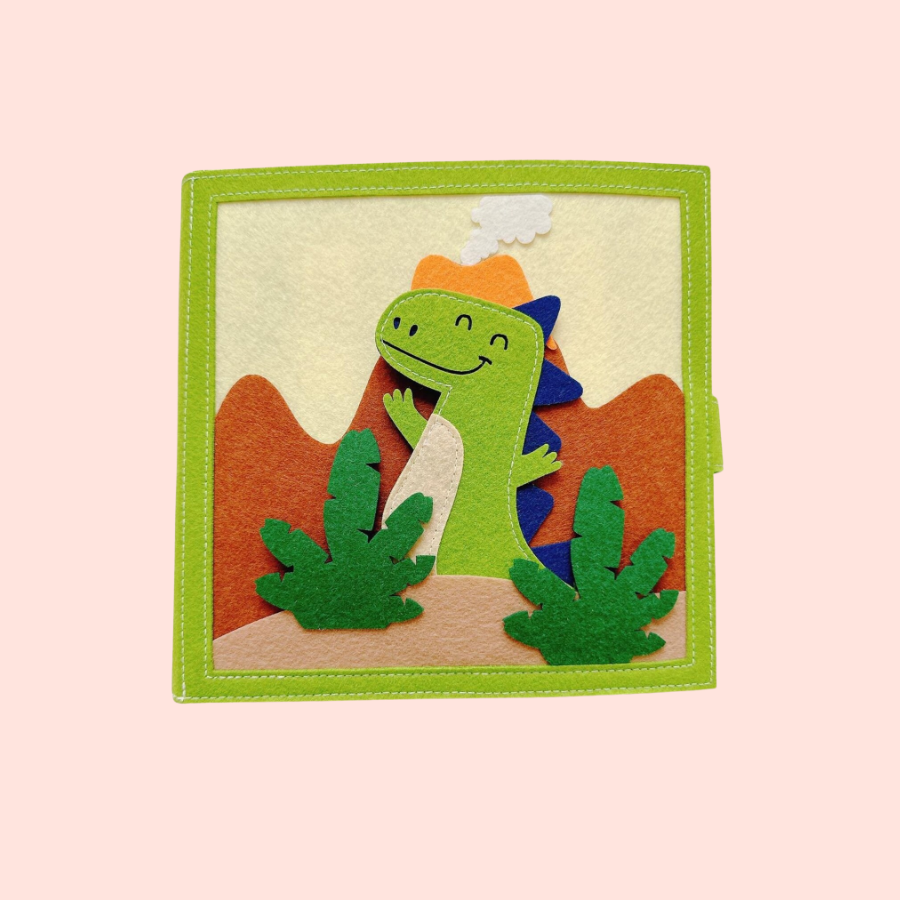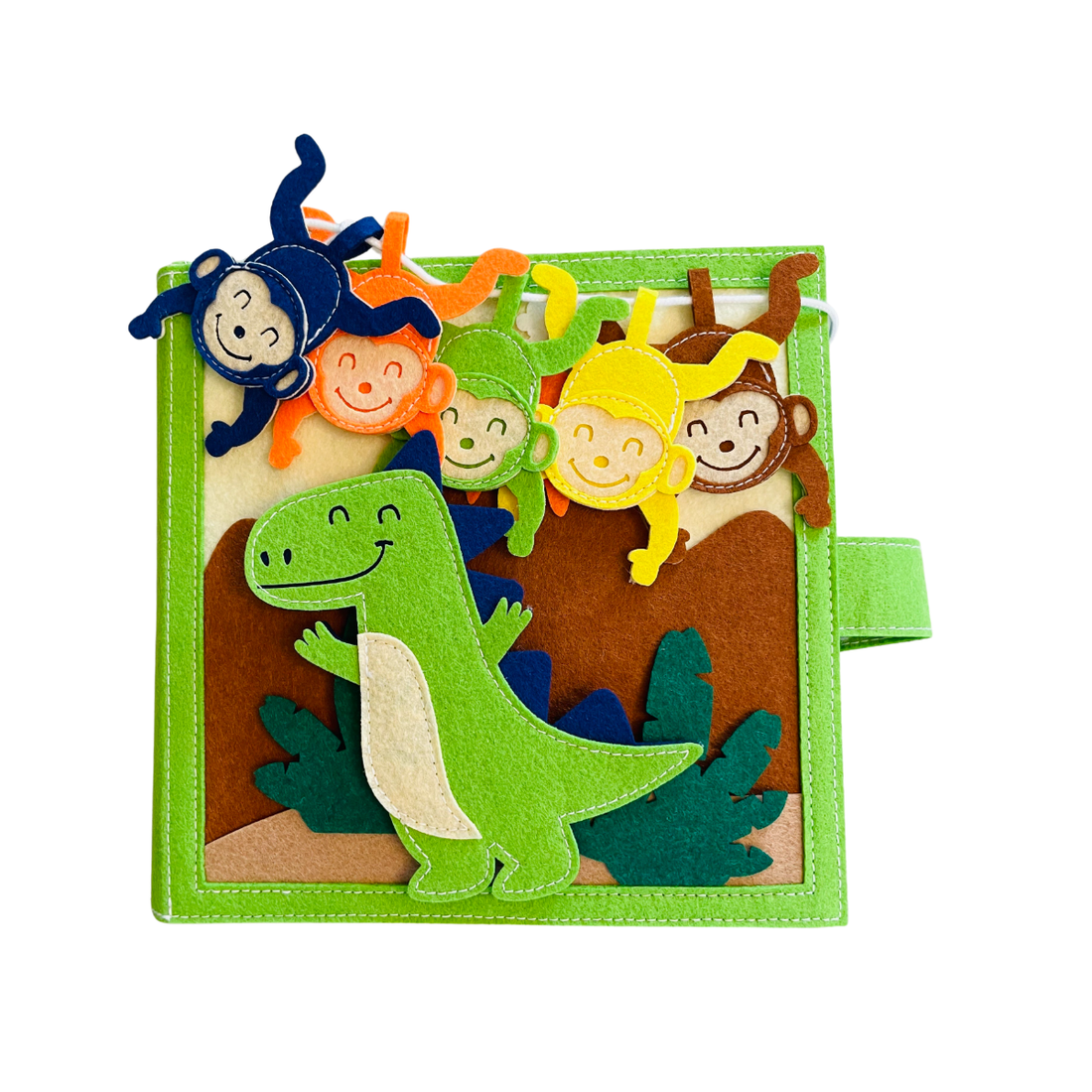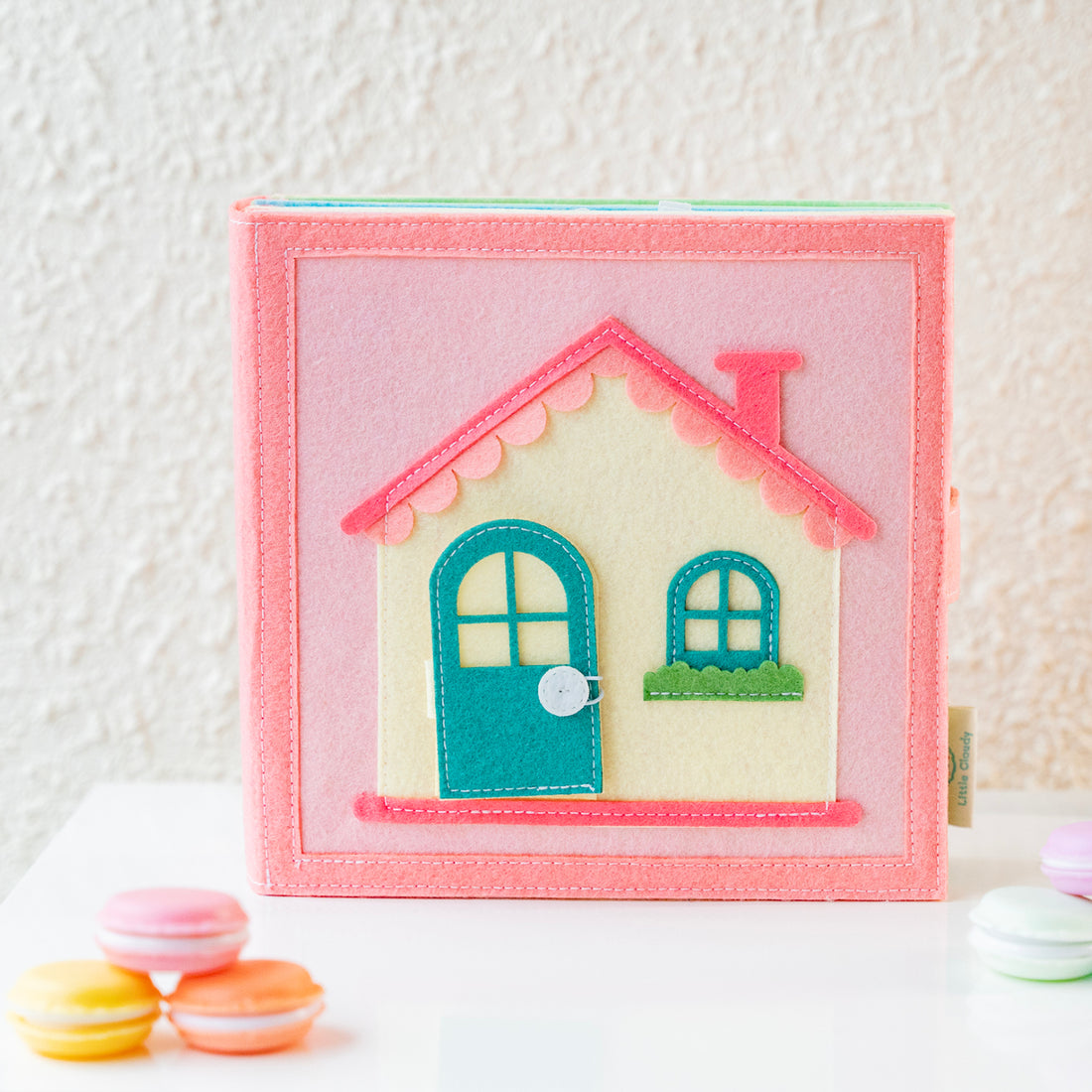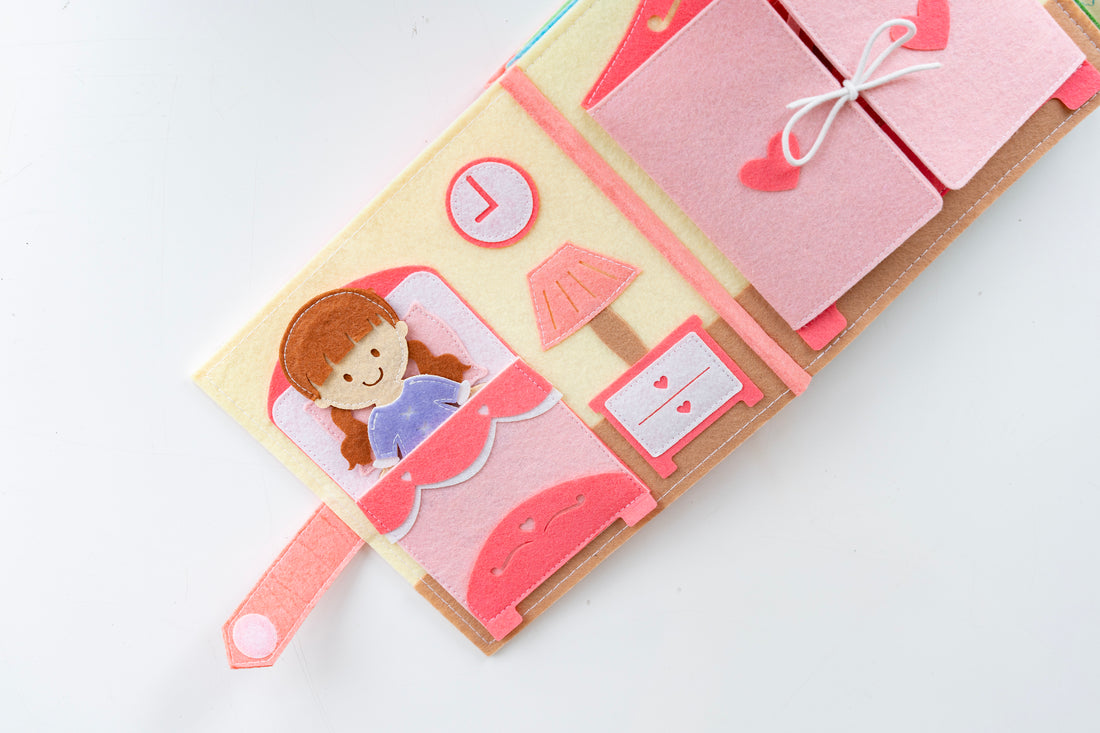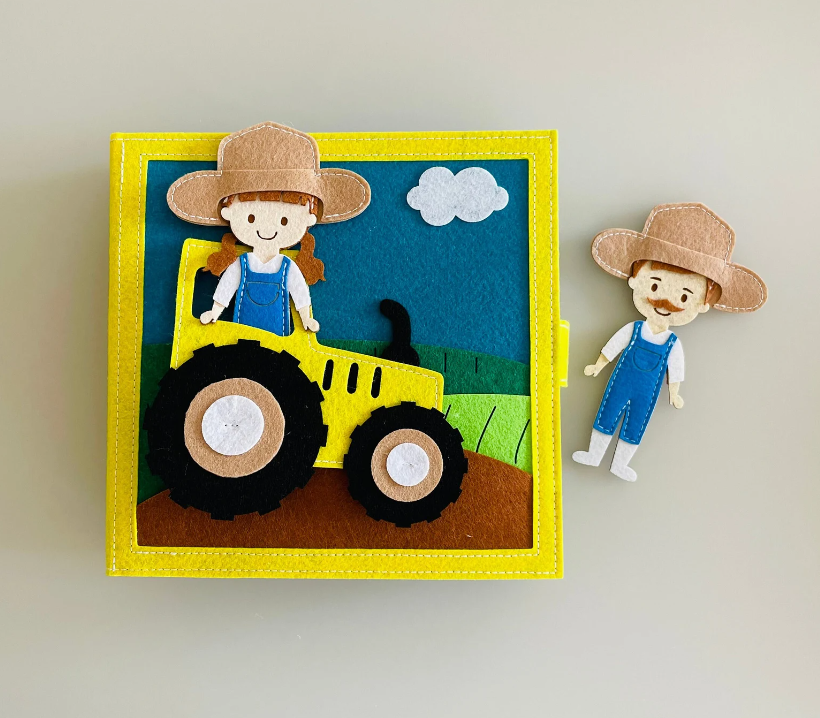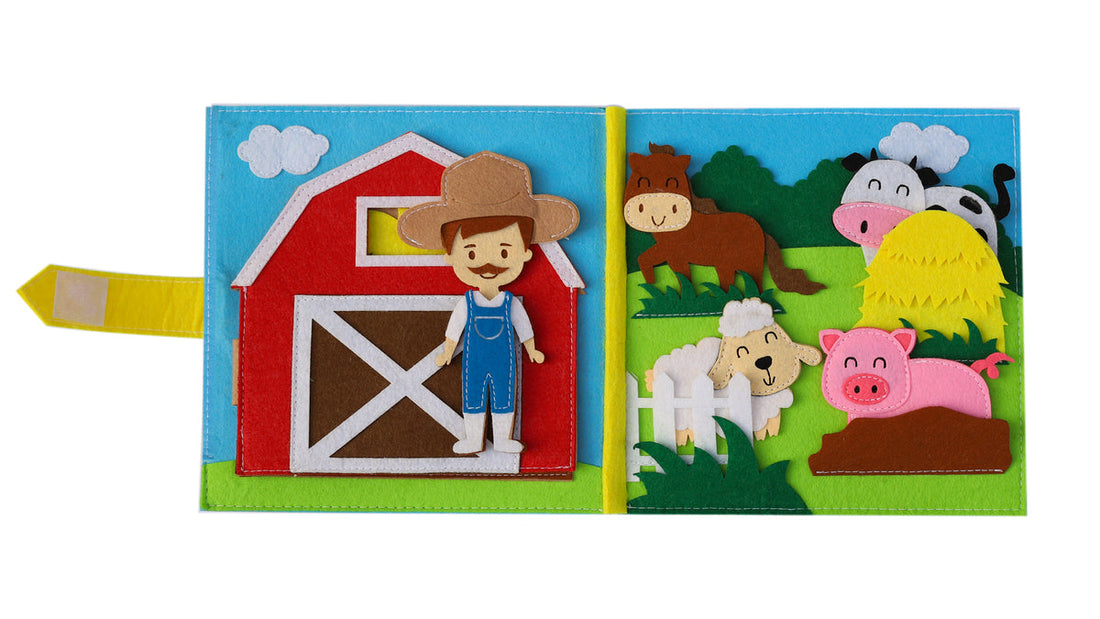Quiet books, also known as busy books, are interactive fabric-based books that provide a plethora of hands-on activities designed to captivate your little one's attention. Inspired by the Montessori approach, these books promote independent play and foster essential skills such as fine motor development, cognitive thinking, and problem-solving abilities.
In this article, we will guide you through choosing the right materials for your busy book and designing interactive pages that encourage learning and engagement. We will also discuss how to incorporate fine motor skills development into each activity and introduce cognitive exercises that challenge your child's problem-solving abilities.
Let us help you create a personalized busy book that keeps your toddler engaged and interested for hours on end!
Key Takeaways
- Quiet books are fabric-based books that promote independent play and essential skills development for toddlers.- They stimulate various senses, enhancing sensory development and curiosity in toddlers.
- Quiet books help improve fine motor skills and promote independent thinking.
- Incorporating cognitive and problem-solving activities in busy books can enhance a toddler's learning and development.
Understanding the Benefits of Quiet Books
Quiet books provide a hands-on and engaging learning experience for toddlers, helping them develop important cognitive and fine motor skills. These sensory books are designed to capture the attention of one-year-olds and keep them entertained for hours on end. Busy book Montessori activities are specifically created with the principles of the Montessori method in mind, promoting independent play and self-discovery.One of the key benefits of quiet books is that they stimulate various senses, such as touch, sight, and hearing. Toddlers can explore different textures, colors, and sounds as they interact with the pages. This multisensory approach enhances their sensory development and encourages their curiosity.
Furthermore, quiet books help toddlers improve their fine motor skills by encouraging them to manipulate objects within the book. From buttoning buttons to zipping zippers, these activities require precise hand-eye coordination and finger dexterity. As young children engage in these tasks repeatedly, they strengthen their muscles and enhance their control over small movements.
In addition to these developmental benefits, quiet books also offer a calm and focused activity that can keep toddlers occupied for extended periods. By providing a structured yet flexible playtime option, busy books for one-year-olds support independent thinking while still offering guidance.
As we delve into exploring Montessori-inspired activities for toddlers next section...
Exploring Montessori-Inspired Activities for Toddlers
Engaging in hands-on Montessori-inspired activities can foster exploration and learning opportunities for young children. By incorporating these principles into our toddlers' playtime, we can create a stimulating environment that encourages their curiosity and independence. Montessori books and busy books are excellent tools to introduce these activities.Montessori books provide a wide range of interactive experiences that promote cognitive development and fine motor skills. From puzzles to matching games, these books offer engaging challenges that keep little ones entertained while also fostering their problem-solving abilities. Additionally, they often incorporate tactile elements like textures and buttons, enhancing sensory exploration.
Busy books are another fantastic option for encouraging independent play and skill building. These customizable activity books feature various tasks such as zipping, buttoning, lacing, and sorting. They not only entertain toddlers but also help them develop essential life skills such as self-care routines.
By exposing our children to montessori-inspired activities through quiet books or busy books, we provide them with valuable opportunities for growth and learning. These activities lay the foundation for future academic success by promoting critical thinking skills and developing fine motor coordination.
In the next section, we will discuss how to choose the right materials for your busy book collection while considering your child's interests and developmental needs.
Choosing the Right Materials for Your Busy Book
Filled with a colorful array of textures and interactive elements, the perfect materials for your busy book collection will transport your child into a world of endless exploration. When it comes to creating a felt quiet book, felt busy book, or felt activity book for your little one, there are several factors to consider. First and foremost, ensure that the materials you choose are safe and non-toxic, as toddlers have a tendency to put everything in their mouths. Opt for durable fabrics that can withstand frequent handling and washing, such as felt or cotton. These materials also provide a soft and inviting tactile experience for your child.Next, think about the age appropriateness of the activities you include in your busy book montessori. For example, if you're making a quiet book for a one-year-old, focus on simple activities that promote fine motor skills development and sensory exploration. Consider adding pages with buttons to practice buttoning skills or pockets to hide small objects.
Lastly, incorporate different colors and patterns throughout your busy book to captivate your toddler's attention. This will not only make the book visually appealing but also enhance their cognitive development by stimulating their curiosity and imagination.
By choosing the right materials for your busy book collection and tailoring them to suit your child's age and interests, you can create an engaging learning tool that will keep them entertained for hours on end. As we move into designing interactive pages for learning and engagement...
Designing Interactive Pages for Learning and Engagement
Using a variety of textures, colors, and interactive elements, the design of each page in our busy book will encourage learning and captivate your child's imagination. When designing interactive pages for our activity book or felt book, we focus on creating engaging activities that promote cognitive development and fine motor skills. For example, we may include a page with different shapes made out of various fabrics like felt or satin for your child to touch and explore. This not only introduces them to different textures but also helps them recognize shapes. We also incorporate bright colors and bold patterns to capture their attention and stimulate their visual senses.Another interactive page could involve counting objects or matching colors. We might have pockets with different colored buttons that your child can sort into corresponding slots on the page. This activity not only teaches color recognition but also enhances their hand-eye coordination as they manipulate the buttons.
Incorporating fine motor skills development is crucial in every aspect of busy book design. By including activities that require pinching, buttoning, snapping, or lacing, we help strengthen the muscles in their fingers and hands while promoting dexterity.
Next up: 'Incorporating Fine Motor Skills Development,' where we will discuss how specific activities in our busy books can enhance these essential skills without sacrificing fun!
Incorporating Fine Motor Skills Development
By incorporating activities that require fine motor skills, our busy book helps develop your child's hand-eye coordination and finger dexterity. Each interactive page is carefully designed to engage their small muscles and improve their ability to manipulate objects with precision. From buttoning clothes to zipping zippers, these tasks not only keep them entertained but also promote the development of important motor skills.Fine motor skills are essential for everyday tasks like tying shoelaces or using cutlery, so it's crucial to start honing them from an early age. Our busy book provides a fun and educational way for your toddler to practice these skills while having a blast. They will learn how to use their fingers and hands in a coordinated manner, which can have long-lasting benefits for their overall physical development.
In addition to manual dexterity, incorporating fine motor activities into our busy book also enhances hand-eye coordination. This means that as your child manipulates different objects on each page, they are simultaneously training their eyes to track movements accurately. This skill is vital for future tasks like catching a ball or reading words on a page.
By engaging in activities that target fine motor skills and hand-eye coordination within our busy book, your child will build a solid foundation for cognitive and problem-solving activities later on. They will be better equipped to tackle challenges that require both mental agility and physical dexterity.
Transitioning into the next section about introducing cognitive and problem-solving activities...
Introducing Cognitive and Problem-Solving Activities
Ready to take your child's learning and development to the next level? Let's dive into the exciting world of cognitive and problem-solving activities in our busy book! These activities are designed to stimulate your toddler's brain, helping them develop important thinking skills while having fun. One great way to introduce cognitive activities is by incorporating puzzles into the busy book. You can create simple jigsaw puzzles with felt or fabric pieces that your child can match and assemble. This will not only improve their hand-eye coordination but also teach them about shapes, colors, and patterns.Another fantastic activity is the memory game. You can make small pockets in your busy book where you place pairs of matching cards or pictures. Your toddler will have a blast flipping over the pockets and trying to find the matches. This game will enhance their memory skills and concentration abilities.
Problem-solving activities are equally important for your toddler's development. You can include simple mazes or lacing cards in your busy book that require them to find a way through a path or thread strings through holes. These challenges will encourage logical thinking, problem-solving, and fine motor skills.
By introducing these cognitive and problem-solving activities into our busy book, we are providing our toddlers with engaging opportunities for growth and learning. Now let's move on to personalizing your toddler's busy book without wasting any more time!
Personalizing Your Toddler's Busy Book

Furthermore, you can tailor the activities in the busy book to align with your toddler's developmental needs and abilities. Consider including puzzles that match their current cognitive level or introducing new challenges to stimulate problem-solving skills. By customizing the content of the busy book, you are providing a tailored learning experience for your little one.
Incorporating personalization into your toddler's busy book not only fosters creativity and imagination but also strengthens the bond between parent and child. As they explore each page filled with familiar faces and themes they love, they will feel connected and engaged in their own little world.
As we delve into tips for keeping your toddler engaged and interested in their busy book, let's explore how simple adjustments can make a big difference in maintaining their enthusiasm for this interactive learning tool.
Tips for Keeping Your Toddler Engaged and Interested

After personalizing your toddler's busy book, it's time to focus on keeping them engaged and interested in the activities. As parents ourselves, we understand how important it is to have strategies that will captivate our little ones' attention for longer periods of time. Here are a few tips that have worked wonders for us!
Firstly, make sure to rotate the activities in the busy book regularly. This will keep things fresh and exciting for your toddler, preventing boredom from setting in. Additionally, consider incorporating new themes or interests into the book as your child grows and develops new preferences.
Another effective strategy is to introduce challenges and problem-solving activities within the book. This not only stimulates their cognitive skills but also keeps them engrossed in finding solutions. For example, you can create puzzles or matching games that require their active participation.
Furthermore, provide opportunities for creativity by including open-ended activities like coloring or drawing pages. This allows your toddler to express themselves freely and encourages their imagination to flourish.
Lastly, remember to celebrate small victories with praise and encouragement! Positive reinforcement goes a long way in motivating toddlers to stay engaged and interested in their busy books.
By implementing these tips, we've noticed a significant increase in our toddler's enthusiasm towards their quiet book. So go ahead and try them out - we're confident they'll work wonders for you too!
